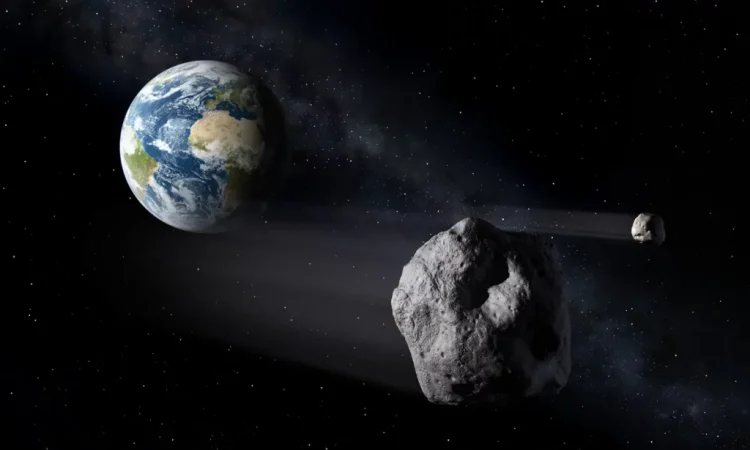
For two months, Earth will acquire a second moon, the small asteroid 2024 PT5. Here’s what we know.
In a few days, the Earth will welcome a temporary celestial companion, in addition to the Moon. This is asteroid 2024 PT5with a diameter of about 10 meters, recently discovered by the two Spanish astronomers Carlos de la Fuente Marcos and Raúl de la Fuente Marcos, thanks to the telescopes of the Asteroid Terrestrial impact Last Alert System in South Africa.
Advertisement
Starting from September 29th until November 25th 2024the asteroid will remain “trapped” in the Earth’s gravitational field, orbiting around our planet like a sort of “second moon”. However, given its small size and considerable distance – amounting to several million kilometers – 2024 PT5 will be too faint to be observed with the naked eye. Even for professional telescopes this is a challenge, and its discovery occurred only thanks to a network of instruments specialized in the detection of objects passing a few million kilometers from Earth, known as near-Earth objects (NEO).
Are there dangers for the Earth?
Despite the close orbit, 2024 PT5 poses no danger to Earth. The asteroid will travel a horseshoe trajectory around our planet, gaining enough speed to escape Earth’s gravitational force and resume its journey through . During its passage, its speed will be relatively low in astronomical terms, around 1,600 km/h, with a minimum distance of 3.5 million kilometers from Earth, far beyond the orbit of the Moon, which is located at around 380,000 km .
What we know about asteroid 2024 PT5
The asteroid, discovered on August 7, 2024, will have its closest approach, or perigee, on January 9, 2025, when it will pass within about 1.8 million kilometers of Earth. During this second passage, it will travel at a higher speed, equal to approximately 3,700 km/h, thus avoiding being trapped by Earth’s gravity.
Although its extremely faint small size – about 250 million times fainter than the faintest star visible to the human eye – makes it invisible without advanced instruments, the presence of 2024 PT5 represents an interesting astronomical phenomenon. Mini-moons like 2024 PT5, thanks to their horseshoe orbit, manage to spend time close to Earth before resuming their journey into deep space.
Read more:

